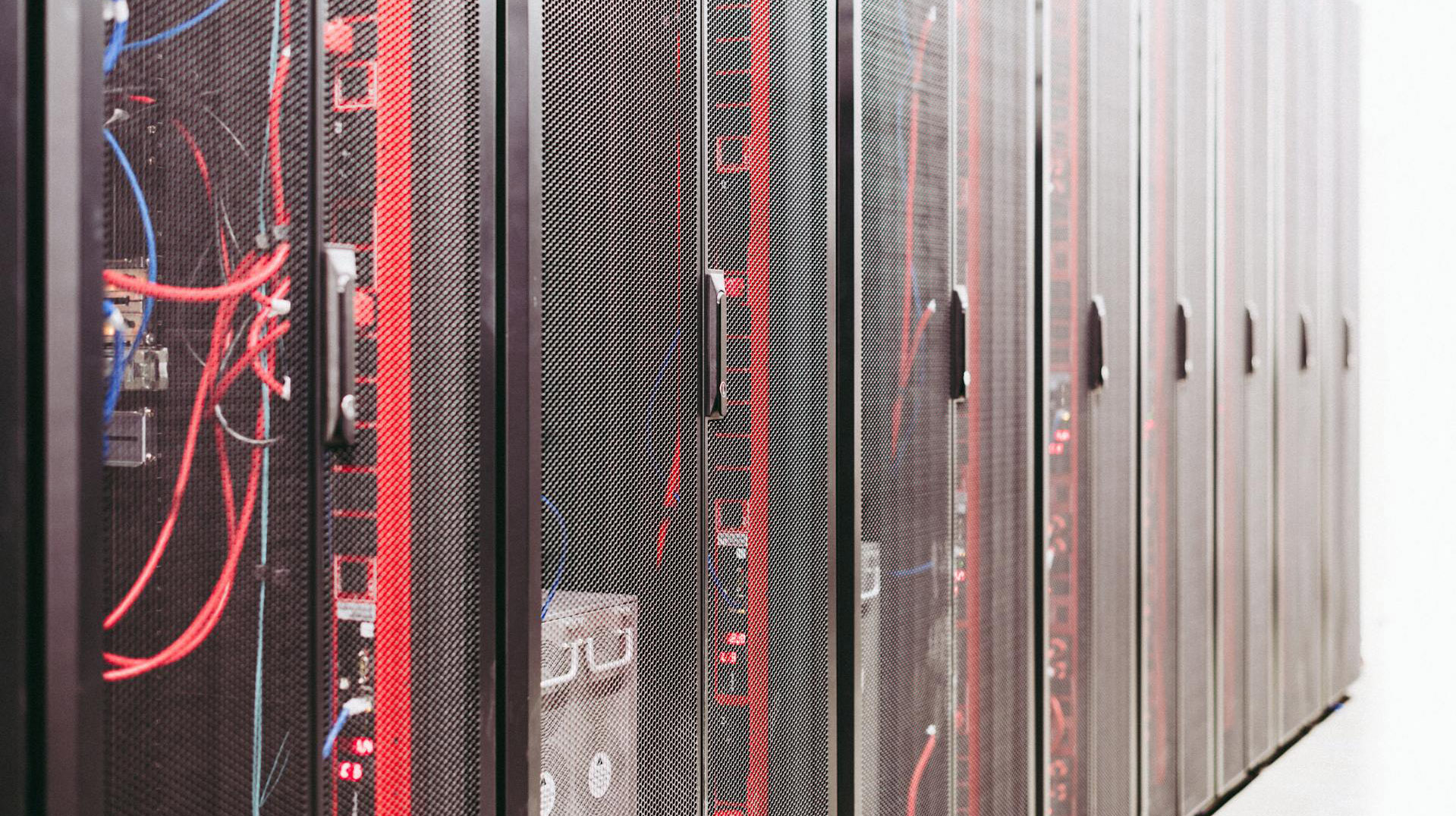In recent years, there has been a growing trend in the adoption of headless computers, which are controlled via remote access software rather than the usual graphical user interface. In this blog post, we’ll explore the key benefits of using headless computers and how businesses can take advantage of SetMe to facilitate headless remote access.
Table of Contents

What is a headless computer?
A headless computer is a system that operates without a monitor, keyboard, or mouse, essentially missing the “head” component. Instead, it is typically managed using remote desktop software.
These computers are commonly used for functions such as server management, cloud computing, or embedded systems, where direct interaction via a GUI is not required. They can be set up and controlled from another device, which often improves their efficiency for long-term, automated, or remote operations.
For example, many web servers, database servers, and network-attached storage (NAS) devices run headlessly, as they do not require direct visual output. They can be accessed and maintained from any location within the network.
Key benefits of headless computers
- Cost efficiency: Headless computers operate without the need for a monitor, keyboard, or mouse, allowing you to cut costs on hardware. This is especially useful when expanding your infrastructure, like with servers or cloud systems.
- Space efficiency: Headless systems are designed to be compact and save space. By eliminating the need for physical displays and input devices, they can fit into smaller areas. This makes them perfect for server rooms, data centers, or any confined spaces where maximizing every inch is crucial.
- Reduced power usage: By operating a headless system that lacks a display and additional peripherals, overall energy consumption is minimized. This approach enhances energy efficiency, particularly in extensive setups where numerous devices are constantly in operation.
- Access from any location: Headless computers allow for remote management, typically through remote access software. This feature is particularly beneficial for IT administrators who oversee systems without needing to be on-site.
- Enhanced security: The absence of a display and keyboard diminishes the likelihood of unauthorized individuals attempting to interact with the system, thereby bolstering security in settings where access to machines is limited.
- Optimized performance: By avoiding the need to render graphics or operate a GUI, the system can allocate more resources to its essential functions. This is particularly beneficial in server settings, where the primary focus is on tasks such as data processing instead of managing visual displays.
- Scalability: A headless infrastructure allows for simpler scaling, particularly in cloud-based or virtualized environments, as you can easily add more machines without the hassle of managing physical peripherals.
- Minimum maintenance: The absence of physical components like a monitor, keyboard, or mouse means there’s less to take care of, leading to fewer potential failure points and making system maintenance easier.
- Reduced e-waste: Headless systems have fewer physical components, leading to a decrease in electronic waste and promoting more sustainable practices in specific settings.
Overall, headless systems are particularly useful in settings where remote management and automation are crucial, such as in server setups or cloud services.
Managing headless computers using remote access software
Managing headless systems via remote access software is efficient, but not without its challenges. Here are some common potential problems that users might face:
- Latency
- Connection reliability
- Firewall, NAT, or port forwarding issues
- File transfer problems due to the shared clipboard or drag-and-drop limitations
Techinline’s SetMe addresses all of these issues allowing you to seamlessly access and manage headless computers in any network conditions, easily transfer files of any size, and control the remote system with zero lag.
Now let’s take a look at the most common use cases for remotely accessing headless computers.
Headless remote access: Use cases
- IT support, troubleshooting & server administration: Tech support technicians and admins use remote desktop software to manage web, database, or file servers without having physical access to them. This allows performing updates, troubleshooting, and configuration changes remotely, as well as fixing issues on headless workstations or kiosks without needing onsite presence.
- Software development & QA: Our own development and QA teams use SetMe for testing and debugging purposes on remote headless computers.
- Remote work: Remote access software, such as SetMe, allows you to access a headless office workstation from anywhere.
- Network device management: Network administrators benefit from using remote access software by being able to remotely configure routers, switches, or firewalls that lack a GUI, as well as troubleshoot NAS devices.
- Kiosks & digital signage: With remote access tools, you can update content or software on headless kiosks or digital signage displays and monitor system health or restart frozen displays remotely.
Facilitating headless remote desktop access with SetMe
SetMe lets you effortlessly connect to any headless system and offers a wide range of features that make managing headless computers easier, more efficient, and secure:
- Unattended remote access: With SetMe, you can set up unattended access on a large number of headless machines and connect to them at any time.
- End-to-end encryption: SetMe guarantees that all data exchanged between your local desktop and the remote headless computer is encrypted using the Datagram Transport Layer Security (DTLS), ensuring complete security.
- Fast remote control with minimal lag: Unlike many remote access solutions like TeamViewer, SetMe offers near-zero latency for controlling headless systems even in poor network condition (<1Mbps), making your experience smoother.
- Permission-based access: With multi-user support, you can assign different access levels to various users, which is crucial for managing numerous systems. For instance, some users might have admin rights, while others can only monitor or execute specific commands.
- Concurrent access: SetMe allows multiple users to remotely access headless computers at the same time, which is beneficial in collaborative settings where several administrators need to work on the same system together.
- Session recording: SetMe enables you to record your remote sessions, which can be useful for troubleshooting or documenting specific actions taken during remote management. The option to save and replay a recorded session is great for auditing, debugging, or training.
- Multi-factor authentication: SetMe incorporates MFA through authenticator apps, such as Google Authenticator, Microsoft Authenticator, Authy, and Duo Mobile, adding an extra layer of security. This ensures that only authorized users can access the headless system, minimizing the risk of unauthorized entry.
- Multi-monitor support: SetMe lets users view multiple monitors on their local machine while accessing a headless computer, enhancing workspace and productivity.
- Cross-platform access: SetMe makes it easy to connect to both Windows and Mac computers.
Powerful solution for managing headless computers remotely
SetMe offers two subscription plans allowing to choose a solution that best fits your business needs and budget:
Solo
Starting at just $33 per month, SetMe Solo is an ideal choice for small or single-person businesses that don’t need to access more than 200 unattended servers.
Professional
SetMe Professional enables teams of any size to access an unlimited number of unattended headless computers for $41 per month.
Get started with SetMe for free
Want to see how SetMe can help elevate your headless remote access experience to the next level? Start your fully-featured 15-day free trial today, or learn more about SetMe and its extensive feature-set on our website.
